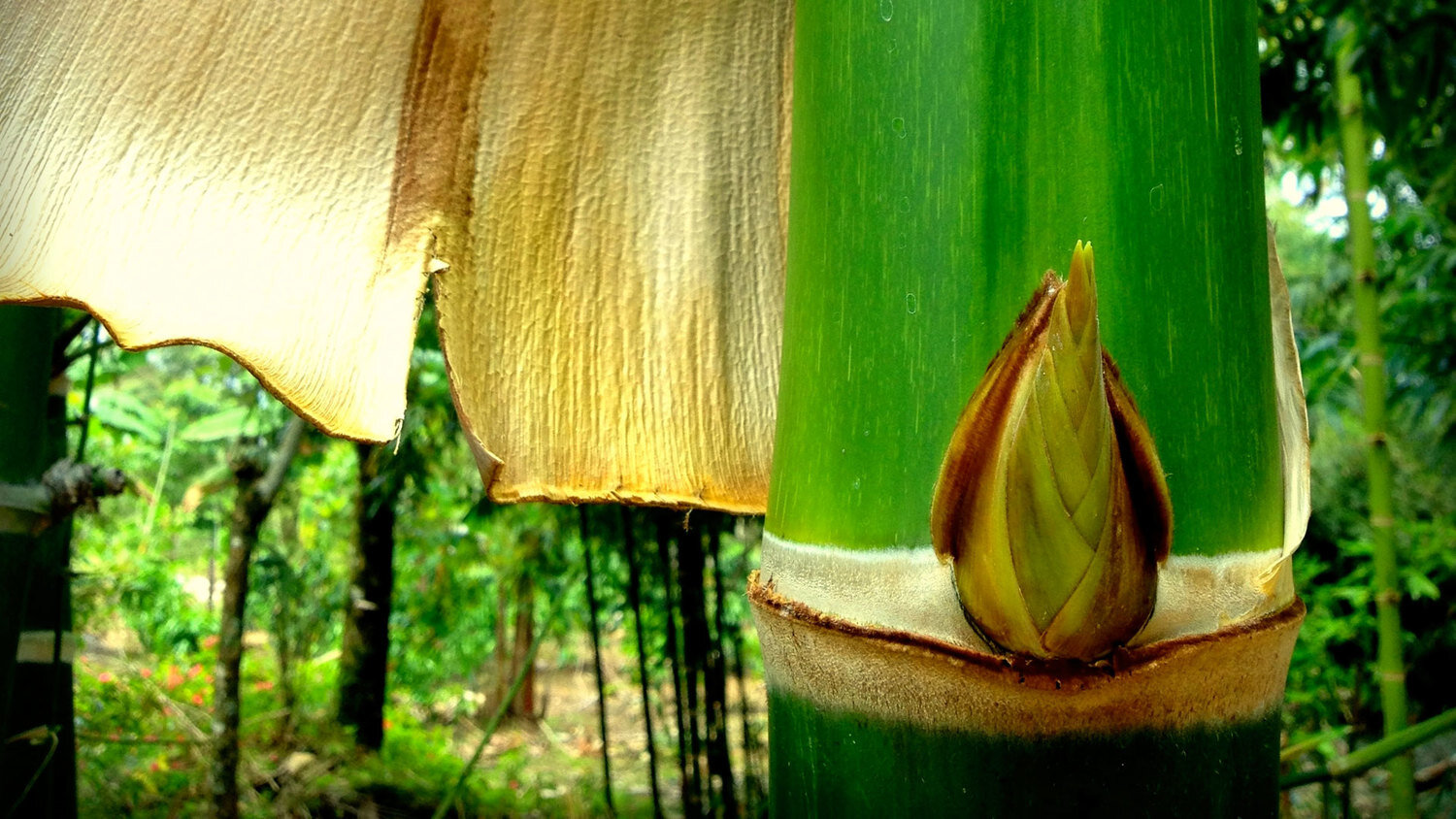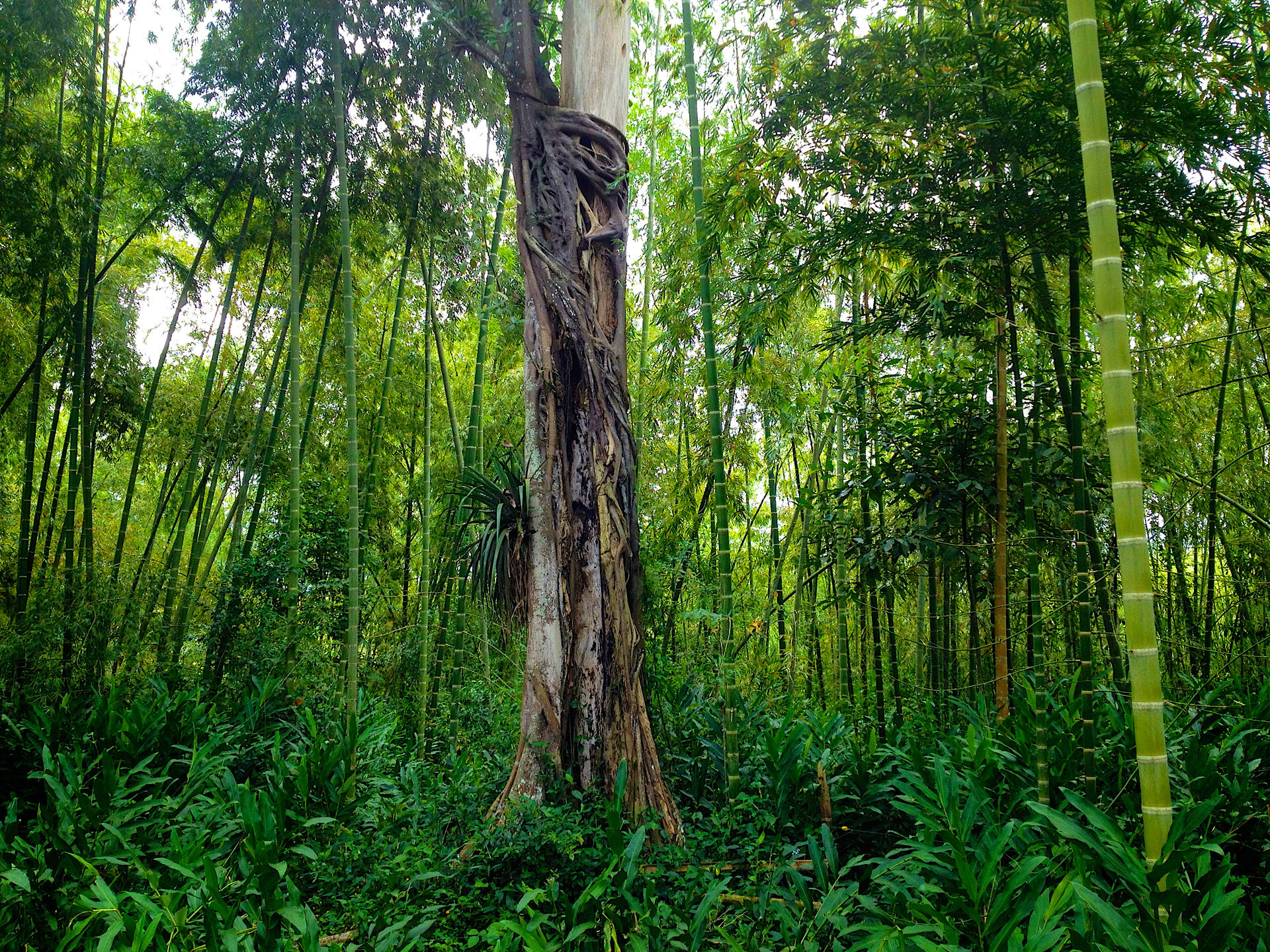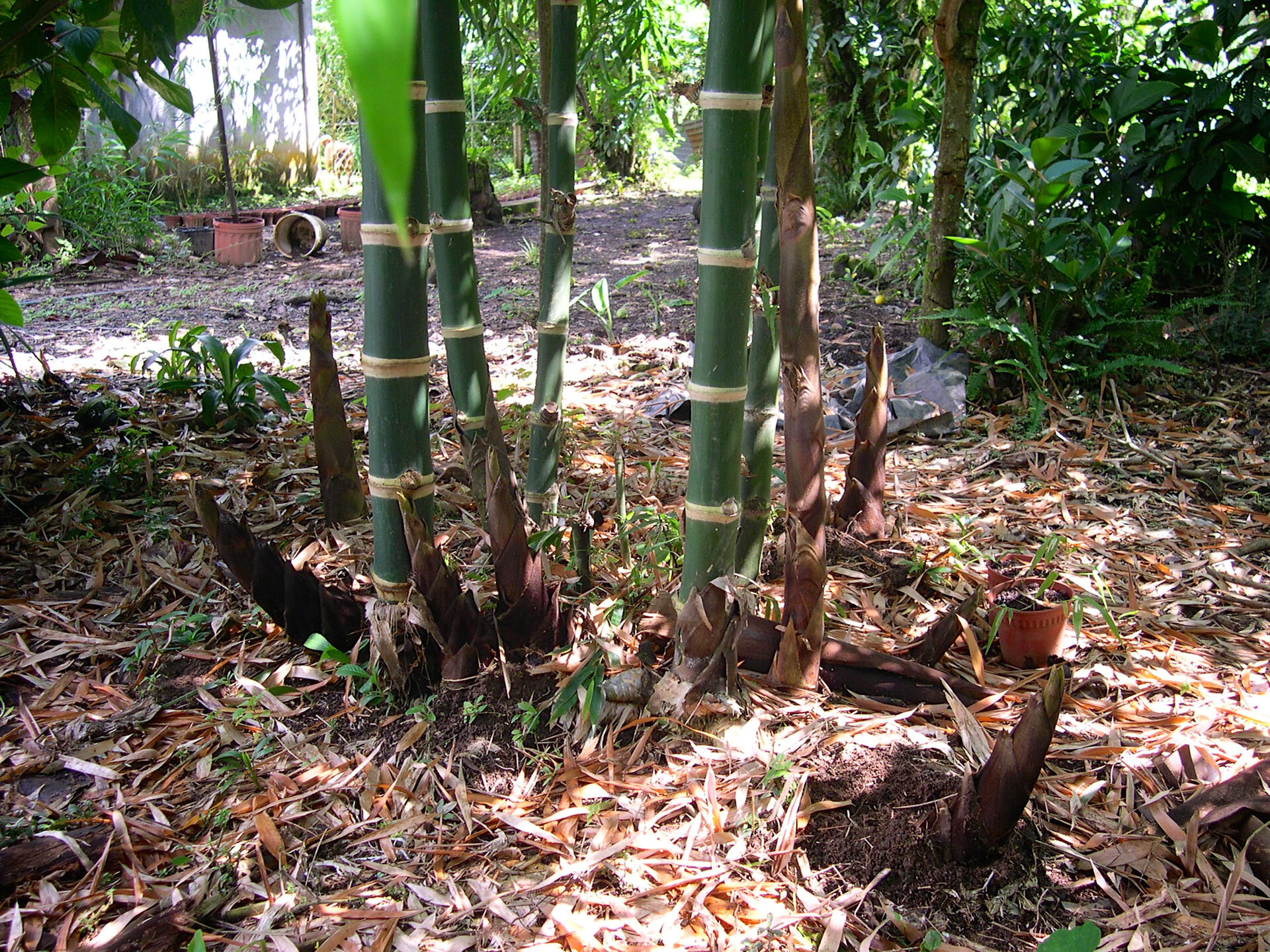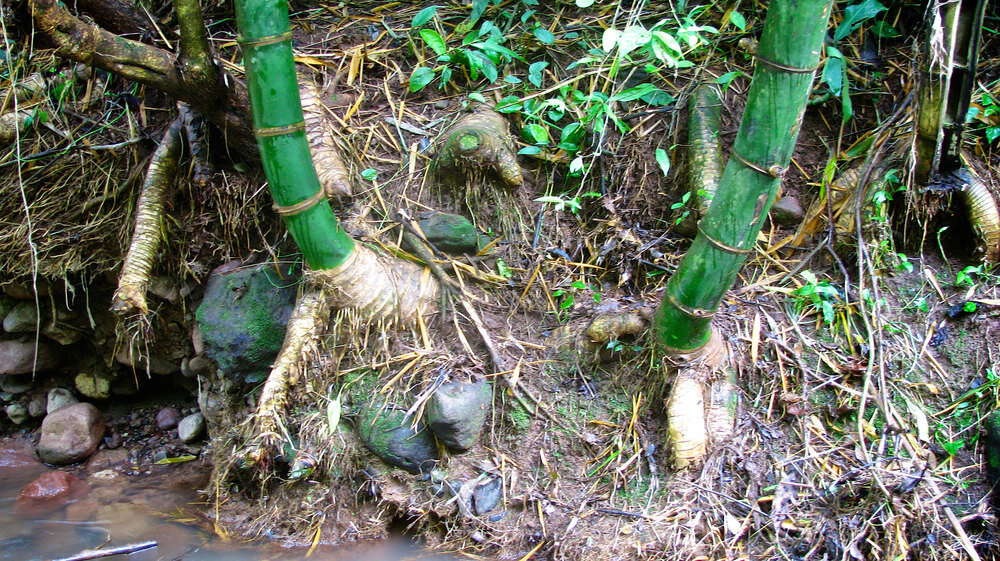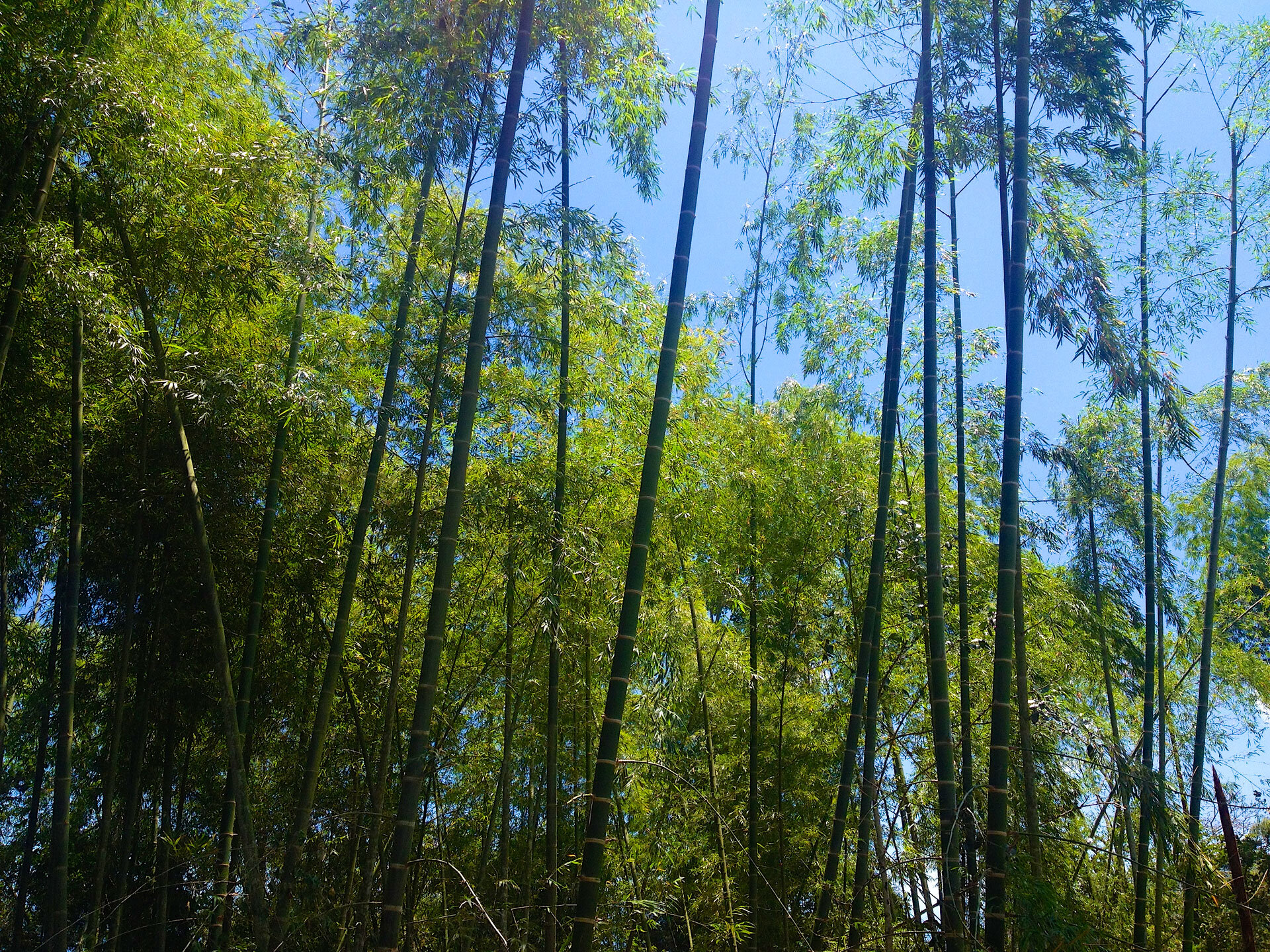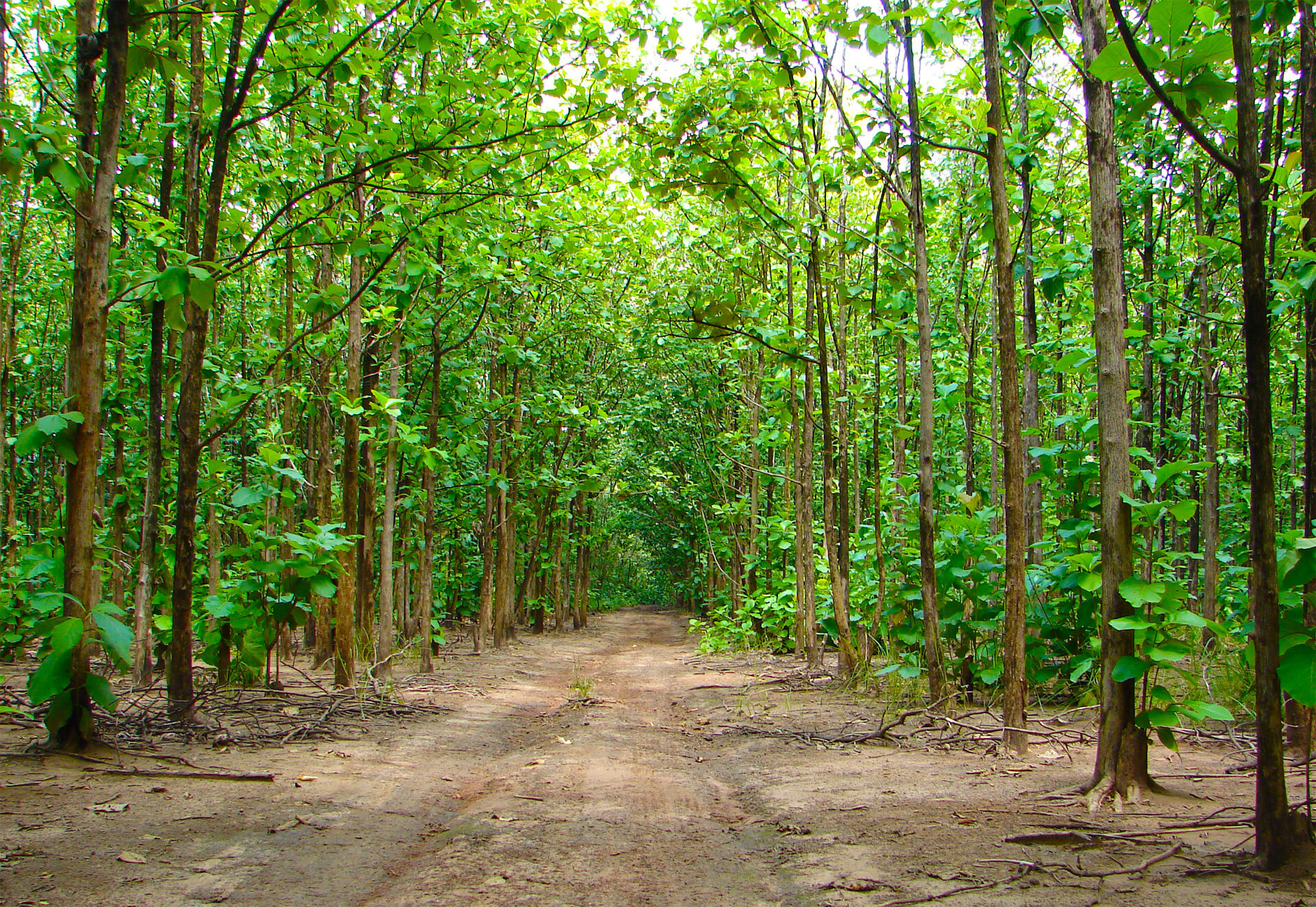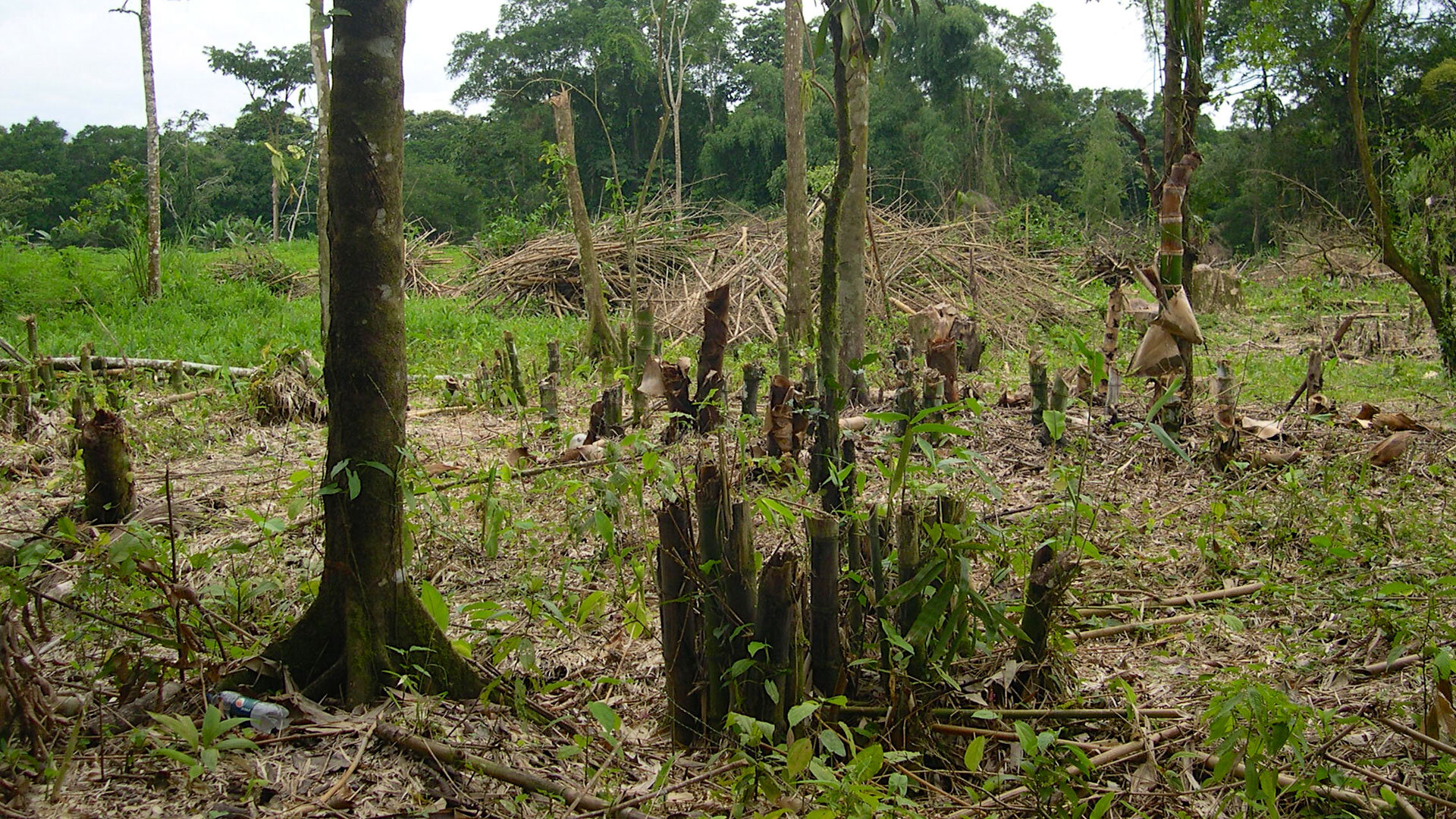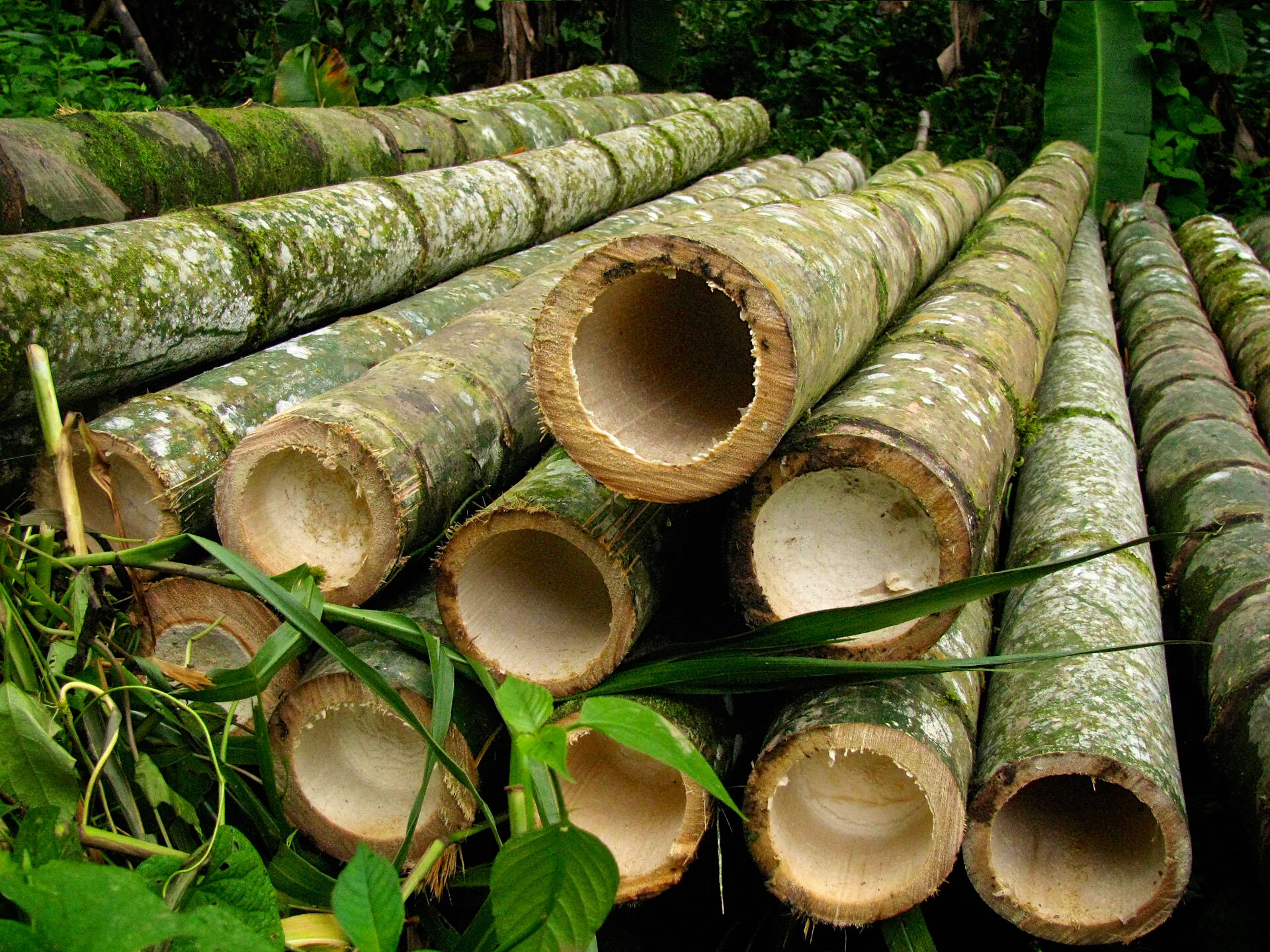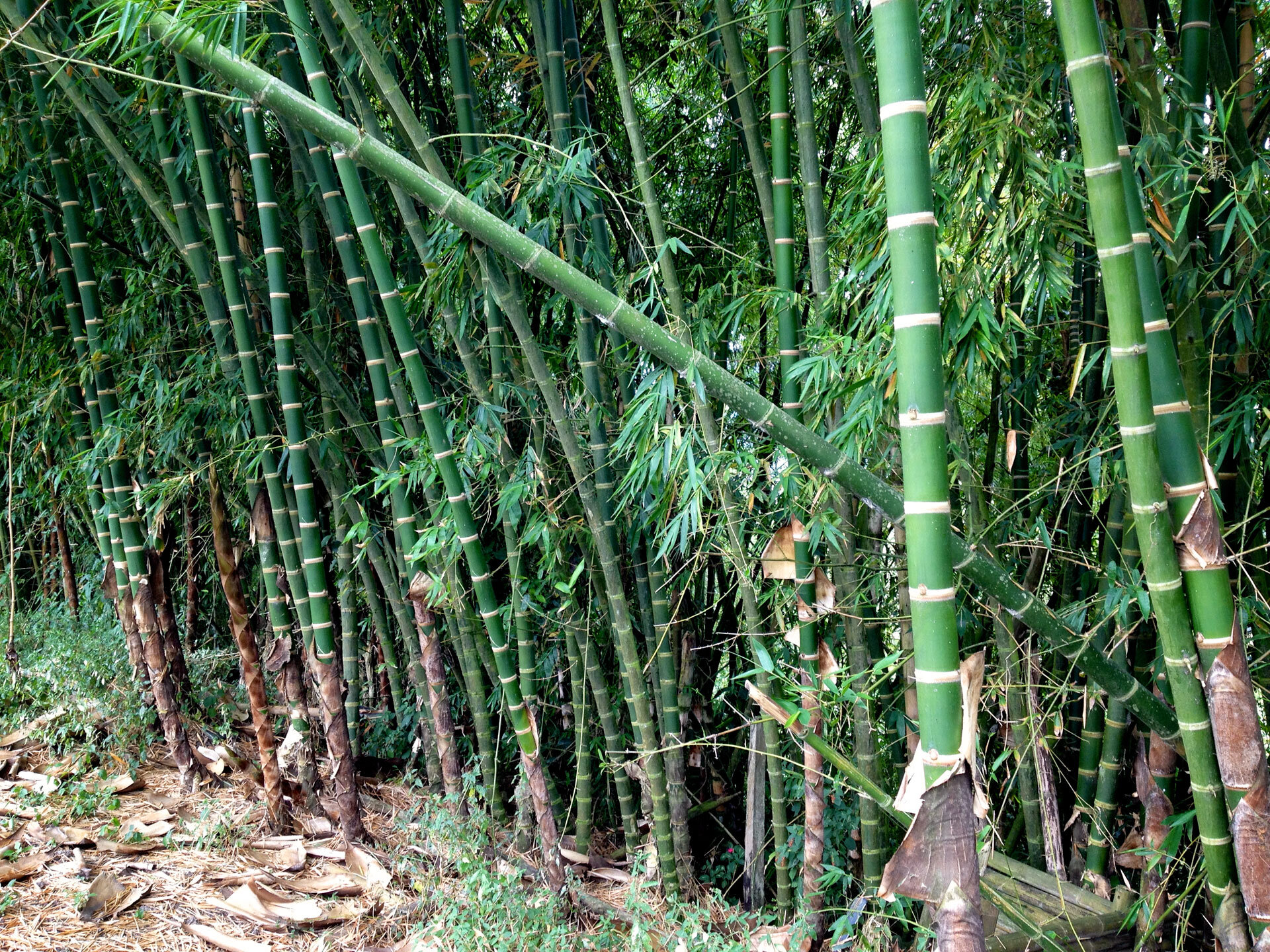Dark Spots on Guadua Bamboo
Evidence of Maturity, Hardness and Strength!
Why do some Guadua bamboo poles have dark spots? The exact cause for dark spots on the outer layer of Guadua Bamboo poles are yet unknown. What is certain is that these stains origin from lichens. Lichens are organisms that grow on different surfaces such as tree bark, rock, roof tiles, or walls. The dark spots on bamboo poles are a result of the metabolic activities of these lichen and its interaction with the bamboo surface on which it grows.
Maturity
In natural bamboo forests or plantations, the presence of lichens on bamboo culms serves as an important indicator for determining their age. Once Guadua angustifolia culms reach 3 years of age, grayish-white lichens and mosses gradually start to appear on the culms.
As the years progress (typically between years 4 to 6), the entire culm becomes covered with these organisms, signaling that the bamboo has fully hardened and is ready for harvesting.
It is important to note that lichens are not parasitic to the host; they do not feed of the bamboo but derive nutrients from the air and rain without impacting the integrity of the bamboo fibers. Therefore, the discoloration is a surface phenomenon, and not a deep-rooted problem that affects the structural integrity of the bamboo.
Regional Differences
In certain regions of Colombia, some of these greyish-white lichens cause dark spots on the bamboo and in other regions they do not (or less). While the scientific explanation for this phenomenon has yet to be proven, we have developed several possible theories over the years.
One notable observation is that the proximity of cattle to the bamboo plantation appears to increase the likelihood of dark spots on the culms. This suggests that the presence of ammonia and acidic pH values may serve as triggering factors for a reaction between the lichens and the outer layer of the bamboo. However, it is important to note that other factors including humidity, light, and temperature also contribute significantly to this process.
For instance, Guadua angustifolia cultivated at higher altitudes (1,600 meters above sea level) generally exhibits a greater number of spots compared to bamboo harvested at lower altitudes. The colder temperatures at higher altitudes slow down the growth of Guadua Bamboo, resulting in a denser and harder culm. This characteristic, similar to the growth pattern of trees, translates into an excellent material for heavy-duty construction purposes. Therefore, the presence of dark spots on Guadua bamboo poles can be considered indicative of high hardness and strength.
Embracing Natural Beauty
Dark spots on Guadua Bamboo poles are primarily an aesthetic issue that is often culturally driven. In tropical areas where this bamboo grows, and where people maintain a close connection with nature, these 'imperfections' contribute to the natural beauty and uniqueness of Guadua. However, in the Western world, where uniform industrial materials set the standard, the acceptance of natural imperfections is comparatively lower.
It is important to recognize that Guadua Bamboo poles are one of the strongest natural building materials in the world. They do not undergo extensive industrial processing and, even when transported from distant regions, they have a CO2 negative impact. Each bamboo pole possesses a distinctive shape and appearance, which should be appreciated much like knots are embraced as natural characteristics of wood.
Therefore, it is important to understand that dark spots on Guadua bamboo poles are not caused by mold, rot or other defects, as is sometimes misconceived. In fact, Guadua with dark spots is now being marketed as “Tiger Guadua” or “Tiger Bamboo” at premium prices, signifying its exceptional quality. Embracing the uniqueness offered by these dark spots adds to the overall appeal and value of Guadua Bamboo.





